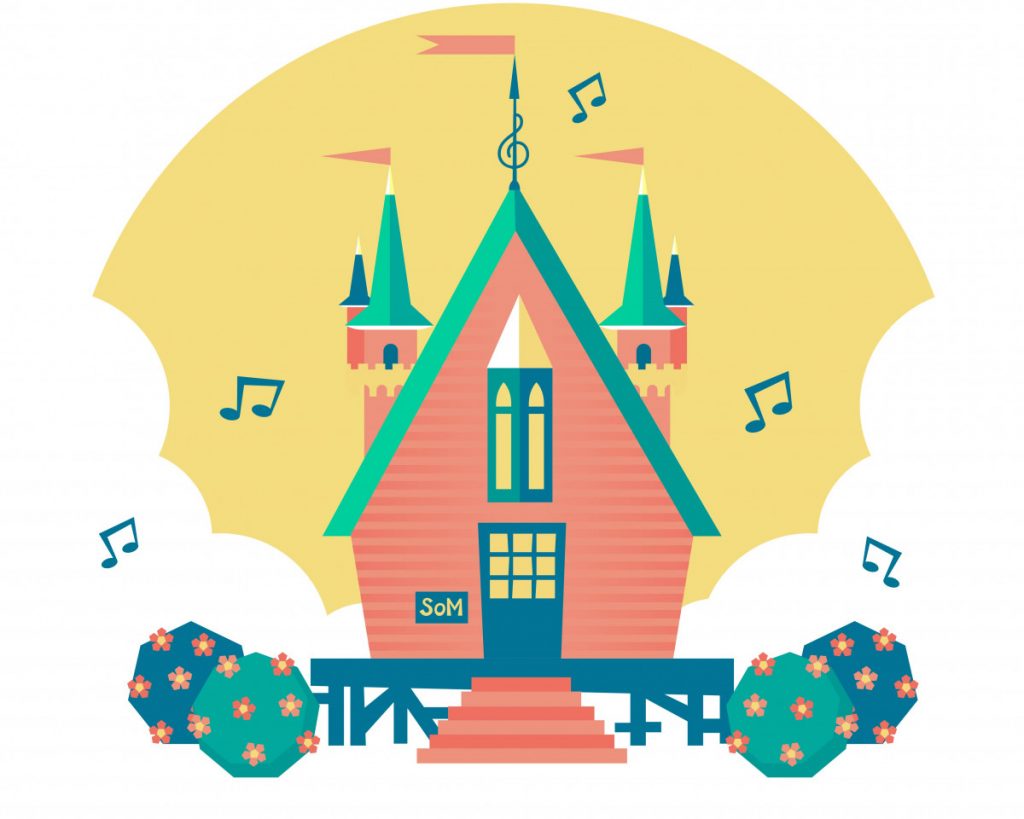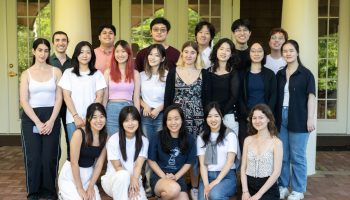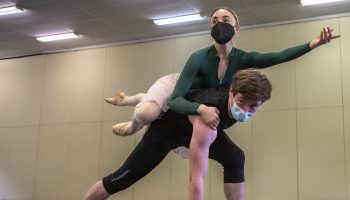
Russian composer Nikolai Kapustin’s love was forbidden.
Amidst the politics of the Soviet Union he was born into in 1937, Joseph Stalin himself claimed the relationship was too outspoken, too unpredictable, too unconventional.
Kapustin and jazz got together anyway.
Kapustin started playing piano when he was 7, writing his first piano sonata when he was just 13, a traditional classical composition. But he soon discovered jazz, which had been suppressed under Stalin, and developed the rest of his career as a jazz pianist, arranger and composer. He recently passed away in July 2020, leaving 161 published works behind.
Kerry Waller, a student from the Guildhall School of Music and Drama, narrowed it down to just one: the first four movements of Kapustin’s “Eight Concert Etudes,” Op. 40.
“He loved to blur the line between classical and jazz,” Waller said. “Now, I do too.”
Waller, along with five other students from the Chautauqua School of Music Piano Program, will perform in their third recital of the season at 4 p.m. EDT on Friday, July 31, on the CHQ Assembly Virtual Porch. Joining him are pianists Charles Berofsky, Samuel Betanzos, Rixiang Huang, Hanxiao Lai and Heemin Park.
“Etude” is French for “study,” and in classical music, Waller said piano etudes are “usually designed” as short, considerably more difficult practice material for perfecting a particular skill.
According to Waller, Kapustin’s etudes threw guidelines “out the window.”
“Kapustin wasn’t one to stick to the status quo,” he said. “His etudes have a lot of variety to them, so there is not one area of focus to note throughout. They certainly check off the difficult category.”
Though a variety in terms of technique, Waller said all of the etudes are “exciting in tone.” The first movement is a relaxed “sort of prologue, where the music unfolds in a friendly manner in front of you.”
The second movement, Waller said, is an “illusion of dreaminess.”
“The second etude has a lot of alternating, tricky notes on the right hand, which then passes the melody to the left hand,” Waller said. “But it’s also like a sandwich — both ends have that dreamy sense, while the middle is more vibrant.”
The third is a toccata, a piece typically featuring fast-moving, lightly fingered or otherwise virtuosic passages or sections, intended to emphasize the dexterity of the performer’s fingers. Waller said the third etude is a piece “with a driving repeated note in which the motion never stops.”
“There is a constant motion of sixteenth notes over and over and over again,” he said. “It’s like a machine that never stops going. It’s definitely a sound that is completely in your face and a bit darker than the rest.”
The last movement revisits the dreamy sound of the second etude.
“It’s not a strong ending by any means; it fades off into nothing,” Waller said.
Rixiang Huang, a graduate teaching assistant at the University of Southern California’s Thornton School of Music, will honor German composer Felix Mendelssohn. Huang said Mendelssohn is an “all-time favorite,” one he has listened to since he was 3 years old.
“I have so much love for him as a composer because I feel so connected to Mendelssohn’s music,” Huang said. “I present his work whenever I can.”
Huang will perform all three movements of Mendelssohn’s “Fantasy,” Op. 28 in F sharp minor. The three movements — ranging from “slow, moderate, and very fast” — are inspired by the 19th-century composers he worked alongside, among them Beethoven, Schubert, Schumann, Brahms and Bruch.
“You can hear a lot of distinct hints of Beethoven’s ‘Sonata quasi una fantasia’ because he, like Mendelssohn, also challenged the boundary of what is considered a sonata and what is considered a fantasy,” he said. “You can hear a lot of Bach in his works, too. He wasn’t afraid to learn from those around him.”
In 1829, Mendelssohn visited Scotland, where he found the inspiration for his “Scottish Symphony” at the Holyrood Chapel in Edinburgh. Mendelssohn’s “Fantasy” was published shortly after in 1834 and includes characteristics of Scottish folk music in the harp-like preluding of the opening and widely spaced chords, according to Huang.
Like Kapustin’s jazz elements, Huang said Mendelssohn’s Scottish twist on classical composition requires an “open mind” from the listener.
“This piece is one of the more major pieces by Mendelssohn and the technique shows it loud and clear,” Huang said. “The audience has to open up their imagination for this one, but I promise, it’s worth it.”




